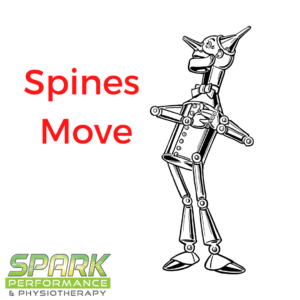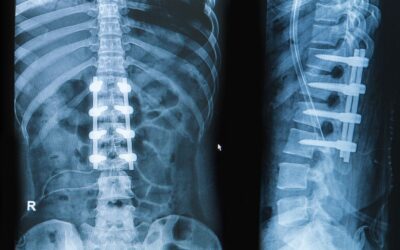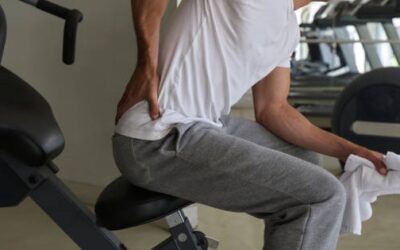Stiff things snap, pliable things bend.
Since when did we start believing that our spines are stiff?
You see it all over your newsfeeds on social media. You see it all over the newspapers that you are reading. It is even on the evening news! Everywhere you look you have somebody trying to tell you about how bad your back must be and that it is on the verge of collapsing on you unless you do XYZ or buy XYZ product.
It is amazing to see all the misinformation being pushed out to try and scare people about their back pain. People are taking advantage of people that are suffering.
Let’s face it, up to 95% of back pain is non-life-threatening.
Back before imaging was available and everyone (well, mostly everyone) had very labor-intensive jobs what would they do if they had back pain?
Somewhere along the lines, we missed the importance of moving and trying to overcome our back injuries. Back before all the fancy imaging we have today, people might rest a little, but it wouldn’t take long before they were back at work providing for themselves and their families. (Before you come hunting for me for making fun of imaging, I understand the importance of it at times. It has saved a lot of lives as well.)

To better explain this, let’s talk about how we treat back pain vs ankle pain. Sometimes, people, sprain/strain their low back, similar to what you would do to your ankle.
But how often do you see pro athletes using crutches for a sprained ankle? How long did you take off after recovering from your last sprained ankle? Likely, not long.
It is important to get up and move your ankle (and back) to help promote healing and recovery.
The most common advice I hear for back pain is to rest, lie down, use heat/ice, take a pill, and/or get some imaging. This is very different from how we treat that sprained ankle we were just talking about…
Just like our ankles need and thrive with movement, our backs do the same thing. They are not weak. They are not stiff/rigid. They are very much pliable! Our spines need movement and loading to help make them stronger and more robust.
Movement will also help with the recovery. It is important not to delay the recovery of back pain by just resting.
The only bad movement is the one you are not ready for. It is all about gradual loading and letting your body respond to that load in the movement you need.
The two biggest risk factors for having back pain are breathing and having a spine.
Suffering from it is optional!
Here are 7 facts about back pain that can help you decide if you are going to suffer or recover from your bout of back pain.
- If something really hurts, we tend to think that the ‘damage’ is just as bad or worse. That is not the case. We all perceive pain differently and an 8/10 for you might be different than an 8/10 for me. This also means your 8/10 right now could have really been a 4/10 twenty years ago. The severity of your pain depends on a lot of different factors.
- Remember that you are not alone in dealing with back pain. Up to 84% of people have had back pain at some point in their life. Here is the kicker, at most, 1% were serious.
- Back pain resolves in most people within a month. It can linger longer, but most people are already starting to go back to their normal lifestyle before then.
- Anywhere between 40-80% of adults without back pain have been shown to have at least one bulging or herniated disc on their MRI. The percentage increases more as you get older, which should not be shocking. But what should be shocking is that I did mention that these changes are seen in those WITHOUT back pain. You can infer that this means changes in your spine likely occur, just like your hair starts to get gray and your skin starts to wrinkle. These are normal changes.
- You are in control of your recovery! This sounds strange but your outlook on your recovery plays a big role in your ability to recover. If you get extremely stressed, lose sleep, and continue to baby/worry about your back pain then it is likely to stick around a lot longer than you would like.
- I have mentioned back pain typically goes away on its own, but the recurrence rate of that back pain goes to about 60-86% within the first year. Be aware of this. If you don’t feel the pain anymore, it doesn’t mean it won’t come back. On the bright side, staying diligent with your rehab program can help decrease the risk of recurrence….
But that also means you shouldn’t freak out or get down if it does come back.
- Seeing a physical therapist who can help guide you back to your normal active lifestyle in a graded response can help with getting you back to your normal lifestyle faster. Finding a professional who will work with you and get you moving is far more beneficial than going to someone and laying on a table, hoping and praying that their hands can fix you with one quick session. (Seriously, if this were true this person would be known worldwide as the back pain healer. Nobody has that good of hands).
So, whether you are currently dealing with back pain, or remember this article for the future, keep in mind your spine is robust!
It is not this fragile, dainty thing that people make it out to be.
Just keep these facts in mind when you are recovering from your bout of back pain.
If you need help with any of this in order to get your active life back as soon as possible, feel free to head over to the low back pain guide and download the free copy.
If you are looking for more individualized care, reach out to check our availability to receive the one-on-one attention you are looking for.




